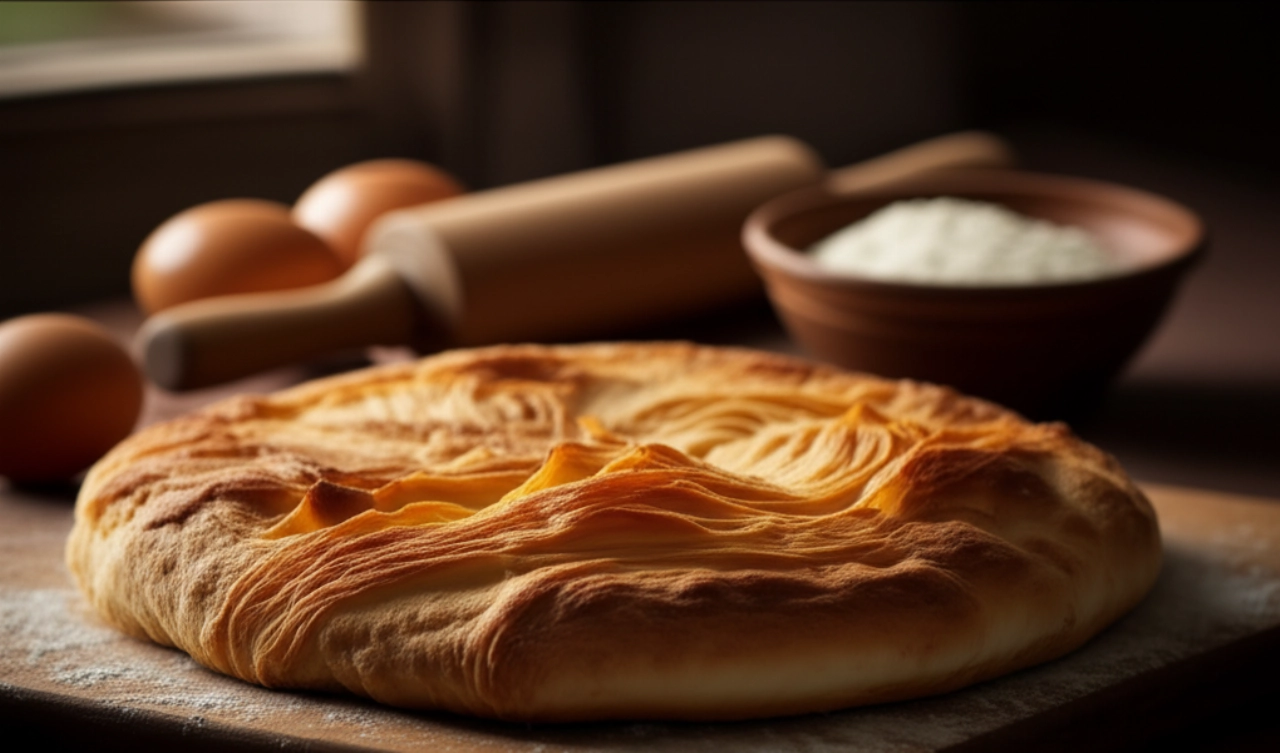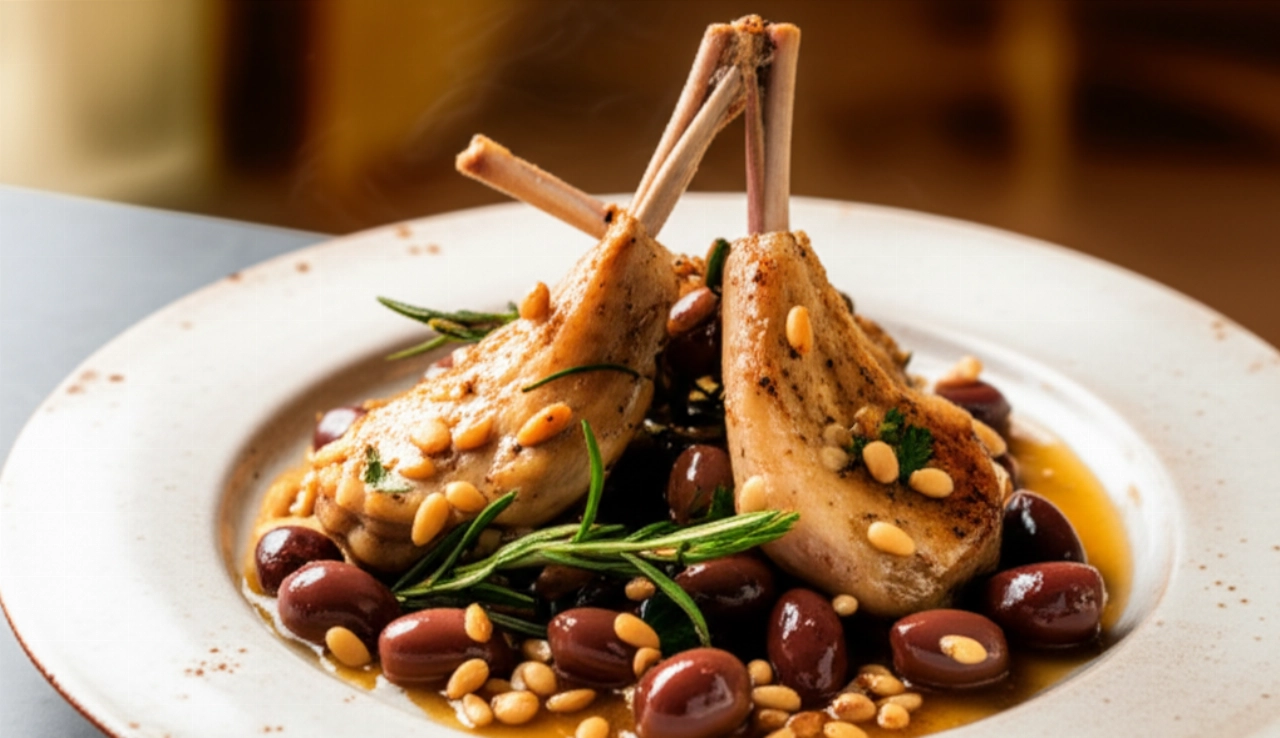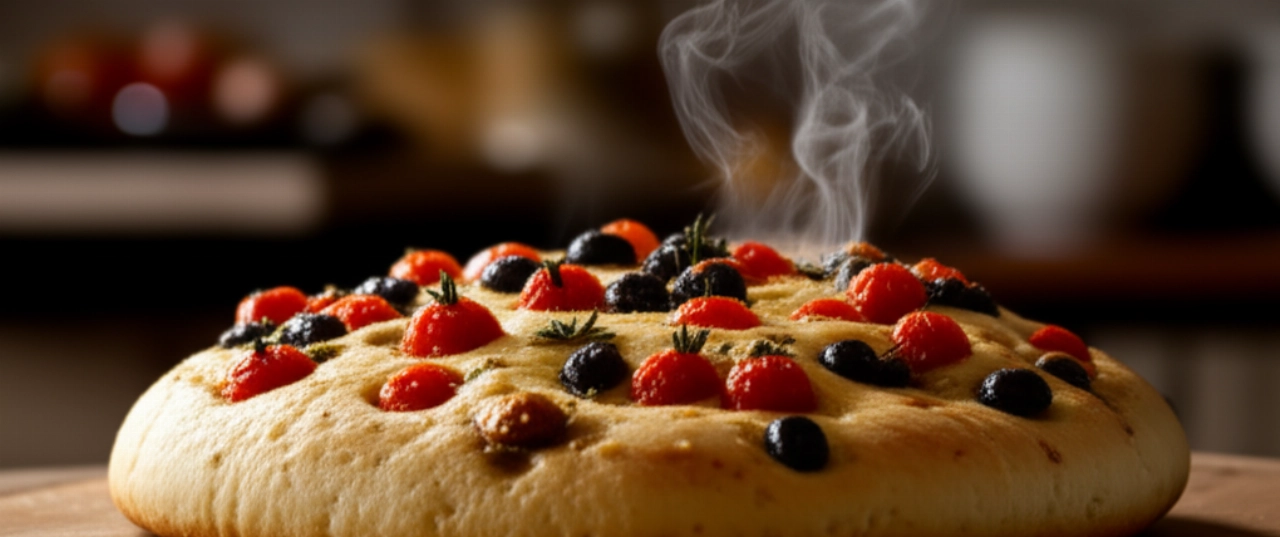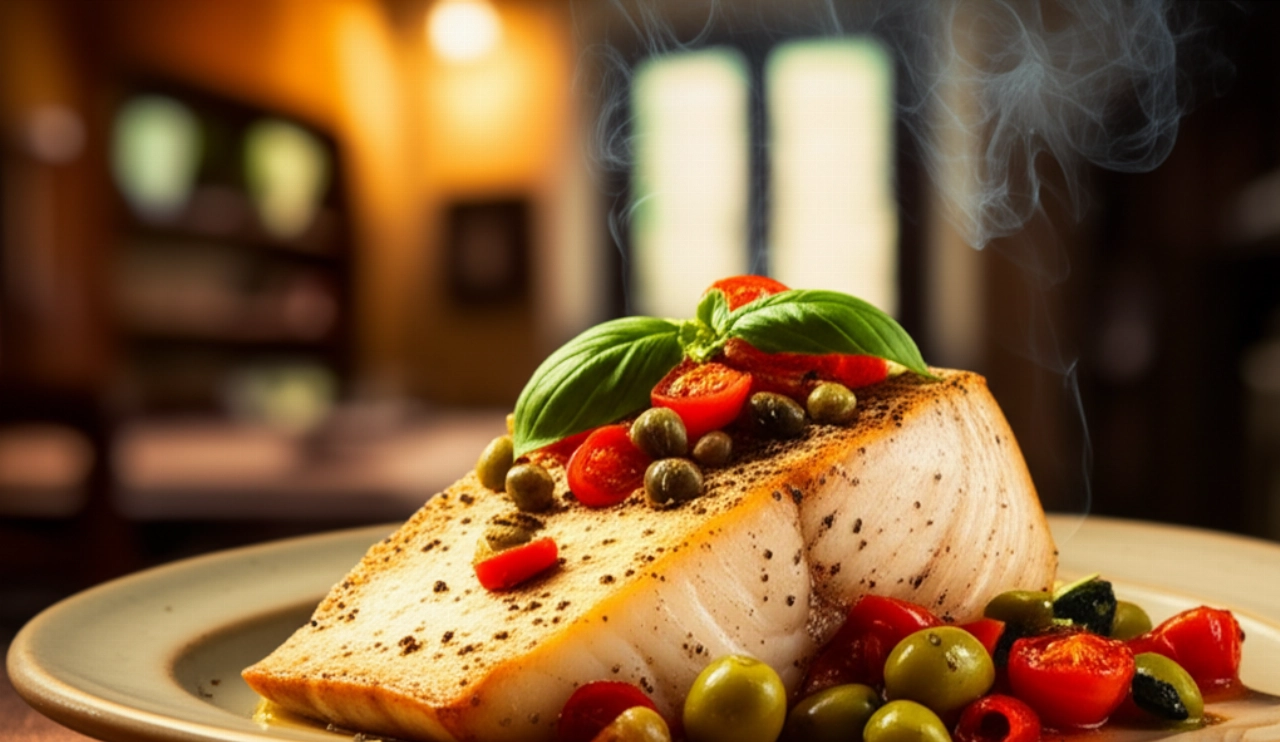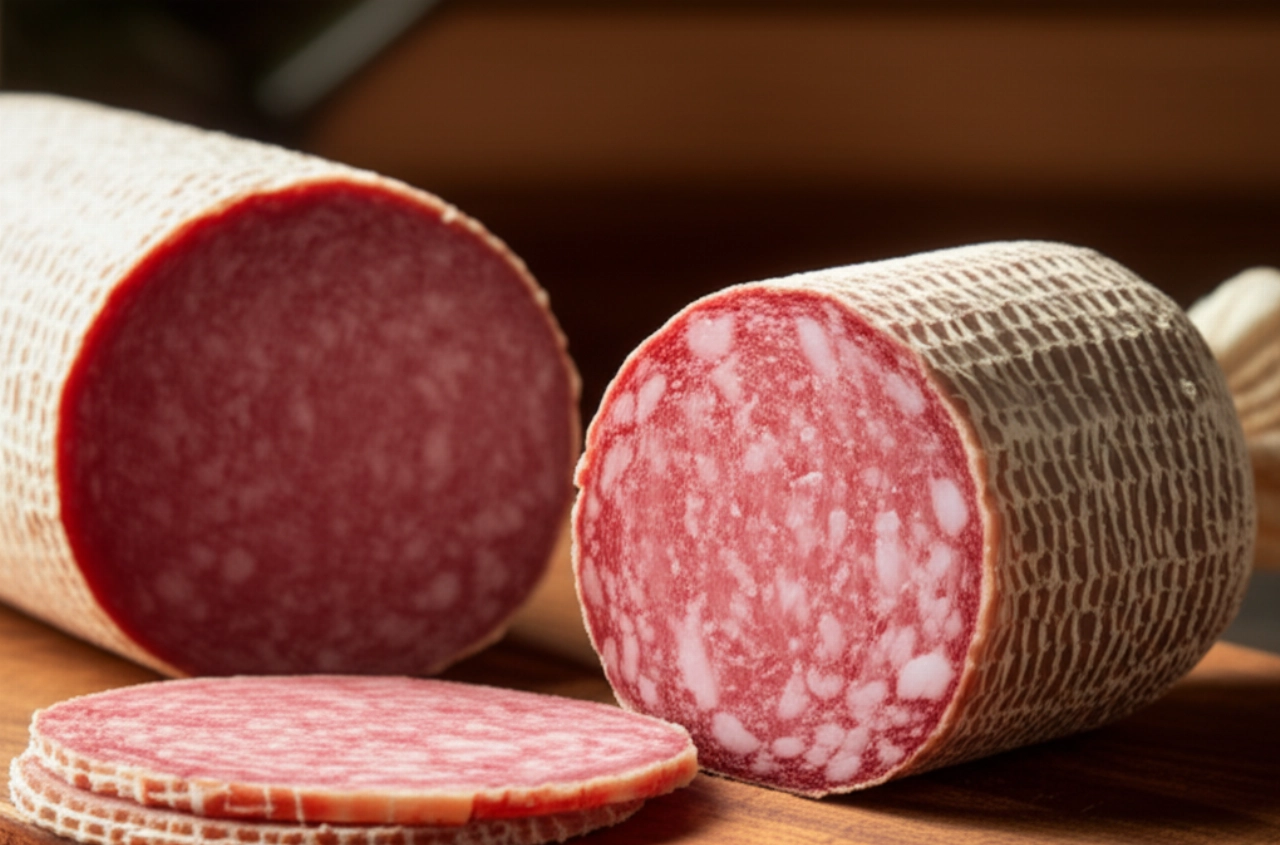There's a scent that speaks of celebration, conviviality, of authentic Marche spreading through the house. A scent that takes you back to Sunday lunches, village festivals, to that crispy bite hiding a soft and flavorful heart. We're talking about Ascolana Olives, a true masterpiece of Italian gastronomy, an irresistible appetizer that wins everyone over at first taste.
But how many times have you dreamed of preparing them at home only to find yourself with olives that burst open during cooking, are greasy, or have a bland filling that doesn't do justice to this culinary gem? The fear of wasting precious ingredients and the apprehension of not replicating that authentic flavor can deter even the most adventurous cooks.
Get comfortable, take notes, and prepare to amaze. Here you won't just find a list of ingredients, but the definitive guide, full of tricks and tips that only a "grandma-chef" can reveal, to bring perfect Ascolana Olives to your table. Success is guaranteed, and the flavor... that of true Marche tradition, which will make you feel at home.
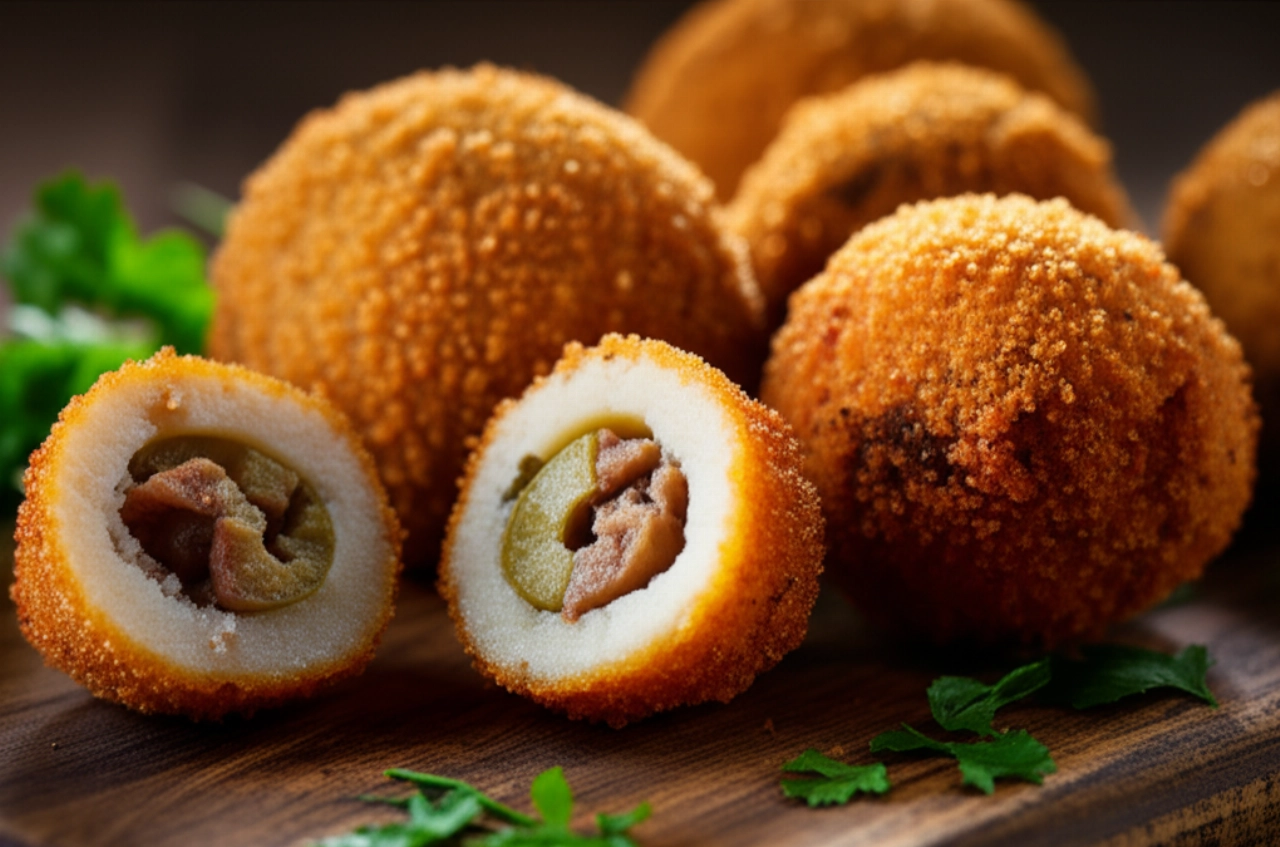
Ingredients for Perfect Ascolana Olives: The Choice That Makes the Difference
The secret to an exceptional dish always starts with the quality of the ingredients. It's not just a list, but a conscious choice that will make the difference between a good fry and a memorable one.
- Olives: The queen is the Oliva Tenera Ascolana DOP. They are large, fleshy, and have a small pit, perfect for stuffing. If you can't find them, look for large, sweet green olives, but authenticity comes from here.
- Meats: A clever mix is essential for the filling. You will need:
- 150g of ground beef (for intense flavor).
- 100g of ground pork (for tenderness and binding fat).
- 50g of ground chicken or turkey (to lighten and add a delicate note).
- Prosciutto Crudo (Cured Ham): 50g, good quality, finely chopped. Adds savoriness and an unmistakable aroma.
- Parmigiano Reggiano: 50g, freshly grated. Not just flavor, but helps bind the filling.
- Eggs: 2 medium, for the filling mixture and for breading.
- Nutmeg: A generous grating. It's the spice that elevates the flavor of the filling, don't underestimate it!
- Dry White Wine: A small glass (about 50ml) to deglaze the meats and add aromatic complexity.
- Meat Broth: A ladle or two, to soften the meats during the filling's cooking. You can use our homemade meat broth.
- Breadcrumbs: Plenty, for breading. Choose good quality, not too fine.
- Frying Oil: Peanut oil or high oleic sunflower oil. These oils have a high smoke point, perfect for crispy and dry frying.
- Salt and Pepper: To taste, always.
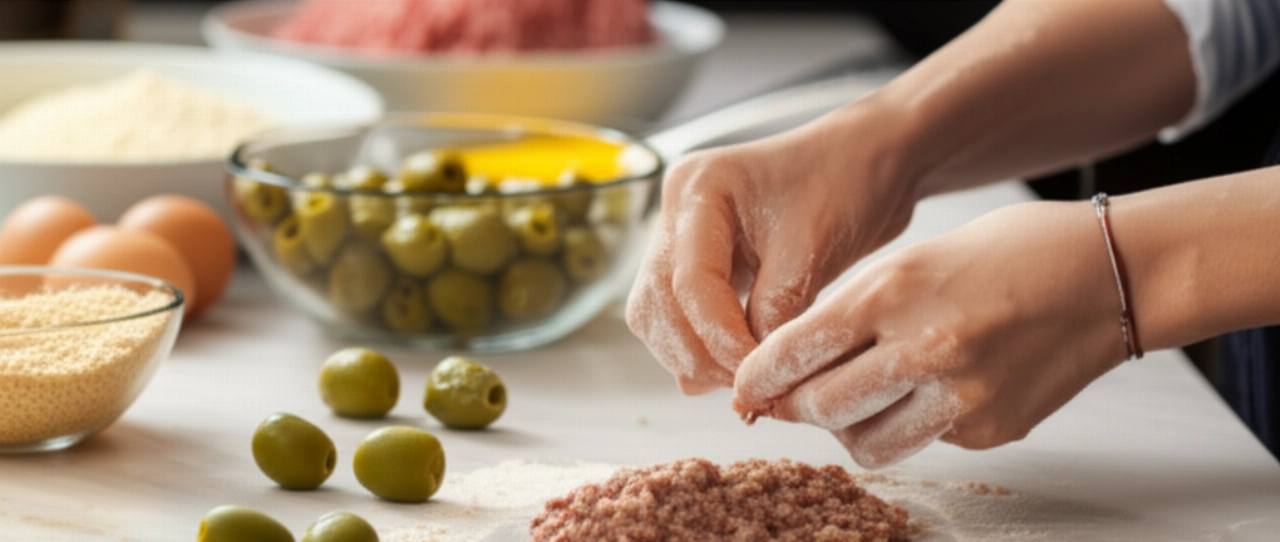
3 Common Mistakes in Preparing Ascolana Olives (and How to Avoid Them)
Preparing Ascolana Olives is an art, but also a path full of small pitfalls. I'll reveal the most common traps to avoid them and guarantee an impeccable result.
- Filling Too Dry or Too Wet: If the filling is too dry, the olives will be tough. If it's too wet, stuffing them will be a nightmare and they risk opening during cooking.
- Solution: Adjust the consistency by adding a tablespoon of hot broth if it's dry, or a tablespoon of breadcrumbs if it's too soft. It should be compact but workable.
- Breading That Detaches or Becomes Soggy: Breading that doesn't adhere well or becomes moist ruins the experience.
- Solution: Double breading is essential! Pass the olives first in flour, then in beaten egg, then in breadcrumbs, again in egg, and finally again in breadcrumbs. Press well to make it adhere. Let them rest in the fridge for at least 30 minutes before frying.
- Wrong Frying (Olives Burnt Outside, Cold Inside, or Greasy): The oil temperature is crucial.
- Solution: The oil should be at 170-175°C (338-347°F). If it's too cold, the olives will absorb too much oil and be greasy. If it's too hot, they will burn outside while remaining raw inside. Fry a few olives at a time to avoid lowering the oil temperature. Use a kitchen thermometer!

The Magic Touch: The Secret That Makes My Ascolana Olives Inimitable
My grandmother, when she prepared Ascolana Olives, had a ritual. After preparing the filling and letting it cool, she would let it rest in the refrigerator for at least a couple of hours, sometimes even overnight. She used to say that "flavors need to marry, they need to become friends." And she was right!
This resting period not only allows the flavors to blend perfectly, making the filling more harmonious and deep, but also improves its consistency, making it easier to work with and less prone to crumbling during stuffing. It's a small gesture of patience that makes a huge difference in the final result. Try it, and you'll smell the aroma of true tradition!
Let's Prepare Ascolana Olives Together: The Step-by-Step Guide
Now that we have all the secrets, let's get cooking. I'll guide you step by step, without rushing, for a result that will fill you with pride.
- Prepare the Olives: If you have fresh olives, pit them with the appropriate tool, trying not to break them and maintaining the spiral shape. If using already pitted olives, drain them well.
- Prepare the Filling:
- In a large pan, brown the ground meats (beef, pork, chicken/turkey) with a drizzle of oil. Break them up well with a wooden spoon.
- When the meats are well browned, deglaze with white wine and let the alcohol evaporate.
- Add the finely chopped prosciutto crudo and a ladle of meat broth. Cover and let cook over low heat for about 15-20 minutes, until the meats are tender and the broth is almost completely absorbed.
- Turn off the heat and let cool slightly.
- Pass the cooked meats through a meat grinder (or food processor) until you get a homogeneous and fine mixture. Do not grind for too long, otherwise it will become a paste.
- Transfer the mixture to a large bowl. Add the grated Parmigiano, the eggs (one at a time, to adjust consistency), a generous grating of nutmeg, salt, and pepper.
- Mix all ingredients well with your hands, until you get a compact but soft dough. If it seems too soft, add a tablespoon of breadcrumbs. If too dry, a splash of broth.
- Cover the bowl with plastic wrap and let the filling rest in the refrigerator for at least 2 hours (or overnight), as I revealed earlier.
- Stuff the Olives:
- Take a small portion of filling (about the size of a hazelnut) and shape it between your hands.
- Gently open a pitted olive and insert the filling inside, carefully closing it to reform the olive. Press well to make the filling adhere.
- Arrange the stuffed olives on a tray as you prepare them.
- Prepare the Breading (Double):
- Prepare three deep plates: one with flour, one with beaten eggs, and one with breadcrumbs.
- Pass each olive first in flour, making sure it is well floured.
- Then in the beaten egg, letting it drain slightly.
- Then in breadcrumbs, pressing gently to make it adhere well to the entire surface.
- Repeat the step in egg and then again in breadcrumbs. This double breading is the secret to perfect crispiness and to prevent them from opening.
- Arrange the breaded olives on a tray and place them in the refrigerator for at least 30 minutes. This will help the breading adhere better during frying.
- Perfect Frying:
- In a deep pot or fryer, heat abundant seed oil (peanut or high oleic sunflower) until it reaches a temperature of 170-175°C (338-347°F). Use a kitchen thermometer, it's your best friend in this step!
- Fry the olives a few at a time, so as not to lower the oil temperature. They should be completely submerged.
- Let them brown evenly, turning if necessary, for about 3-4 minutes, until they are a beautiful golden and crispy color.
- Scola the olives with a slotted spoon and place them on absorbent paper to remove excess oil.
- Serve them hot, they are irresistible!
Tips and Frequently Asked Questions about Ascolana Olives
Here are some of the questions I get asked most often, with answers to clarify any doubts.
- Can I use olives other than Ascolana?
Yes, you can use other varieties of large, fleshy green olives, provided they are sweet and easy to pit. However, for authenticity and traditional flavor, the Oliva Tenera Ascolana DOP is irreplaceable.
- Can I prepare the olives in advance?
Absolutely yes! You can prepare the filling the day before and store it in the refrigerator. Stuffed and breaded olives can be stored in the refrigerator, well covered, for 12-24 hours before frying. In fact, resting in the fridge helps the breading adhere better.
- How can I freeze them?
Ascolana Olives freeze very well raw, after being stuffed and breaded. Arrange them on a tray without touching each other and place them in the freezer. Once frozen, transfer them to food-safe bags. To fry them, do not thaw: drop them directly into hot oil from frozen, slightly increasing cooking times.
- Why do my olives open during cooking?
There are several reasons: the filling is too wet, you haven't pressed the filling well into the olive, the breading hasn't adhered well (that's why double breading is crucial!) or the oil wasn't hot enough, causing excessive time in the oil.
- What is the ideal frying temperature?
The ideal temperature is between 170°C and 175°C (338-347°F). A kitchen thermometer is your best ally for monitoring it. A correct temperature ensures a golden, crispy, and non-greasy fry.
There you have it! Now you no longer just have a recipe, but all the secrets to bring a dish to the table that tastes of home, tradition, and love. An appetizer that speaks of conviviality and authentic flavors, capable of eliciting a "wow!" with every bite.
Don't be afraid to experiment and make these techniques your own. Cooking is a gesture of creativity and generosity. But start from this solid base and you'll see that applause won't be lacking. Your Ascolana Olives will be a guaranteed success, worthy of the best Marche trattoria.
Have you tried our recipe? We're very curious to see your masterpiece! Leave a comment below, tell us how it went, or share a photo on Instagram by tagging @CercaRicette.it. If you loved these olives, you can't miss our recipe for an Italian Mixed Fry or another Marche delight like the original Vincisgrassi.

